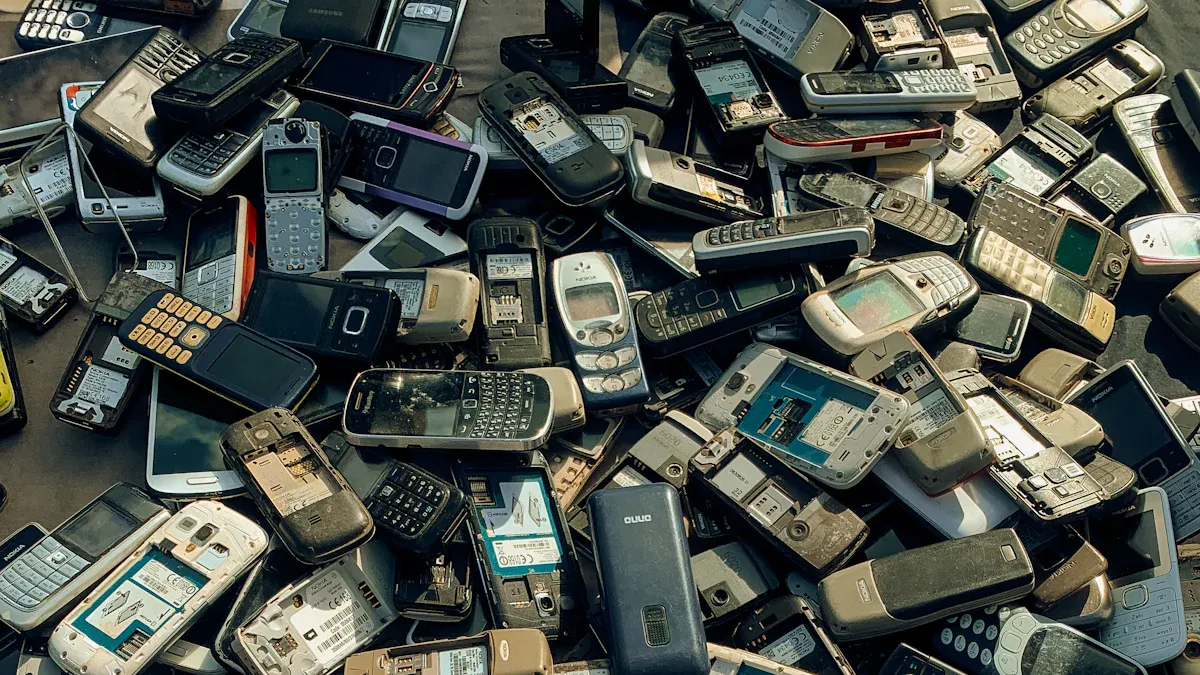
Recycling ouro from old jewelry and electronics lets us use gold again in new things. When you recycle gold, you help stop the need for dangerous mining. Mining one gold ring can make up to 20 tons of toxic waste. Recycling also helps the economy.
Economic Aspect | Statistic / Data Point | Economic Benefit Description |
|---|---|---|
Global Market Value | Shows the huge money recycling can make around the world. | |
Job Creation | Over 530,000 jobs in the U.S. | Gives many people jobs in recycling. |

You can help by recycling your own things. This helps keep the Earth safe for people in the future.
Key Takeaways
Recycling gold from old jewelry and electronics helps the environment. It lowers the need for mining and cuts down on pollution. About one-third of all gold comes from recycling. This shows gold is valuable and can be used again. Old jewelry and electronic waste give most of the recycled gold. This process also creates jobs and helps the economy. Recycling gold means collecting, sorting, melting, and cleaning it. This makes the gold pure and ready for new things. You can help by getting your gold items ready. Take them to certified recyclers. This way, you get fair value and help the planet.
Gold Recycling Basics
What Is Recycled Gold
You may wonder what recycled gold is. Recycled gold comes from things people do not use anymore, like jewelry, coins, or electronics. Companies gather these items and melt them. Then, they clean the gold so it can be used again. This does not include gold traded in for new jewelry or leftover scraps from making things. Recycled gold is gold that has already been used and is now ready for something new.
Metric | Q1 2024 | Q1 2025 | Year-on-Year Change (%) |
|---|---|---|---|
Total gold supply (tonnes) | 1,194.2 | 1,206.0 | +1 |
Mine production (tonnes) | 853.4 | 855.7 | 0 |
Recycled gold (tonnes) | 345.3 | -1 |
The table shows that recycled gold is a big part of all gold. About one out of every three pieces of gold comes from recycling. The International Energy Agency says 86% of gold at the end of its life gets recycled. This high number proves gold is valuable and can be used again.
Did you know? Scientists use special tools like X-ray photoelectron spectroscopy (XPS) and high-resolution electron microscopes to check if gold can be taken from electronic waste. These tests show gold nanoparticles form and stay strong during recycling.
Why Recycle Gold
Recycling gold helps the Earth. Mining new gold hurts nature. It ruins animal homes, makes water dirty, and puts bad gases in the air. Making just one gram of new gold creates about 36,410 grams of carbon dioxide. But recycling the same amount only makes 53 grams of carbon dioxide. So, recycling cuts carbon by almost 100%.
Recycling gold also keeps dangerous chemicals out of dumps. Old electronics have harmful stuff inside. When you recycle, you stop these toxins from getting into the ground and water. You also save energy and lower the need for new mining. Many countries now use safe and smart ways to recycle gold.
Spectroscopic and imaging tests show gold can be taken from waste without losing quality.
Quantum chemical studies prove gold sticks well to special materials during recycling, so the process works well.
When you recycle, you help make the world cleaner and healthier.
Sources of Recycled Gold
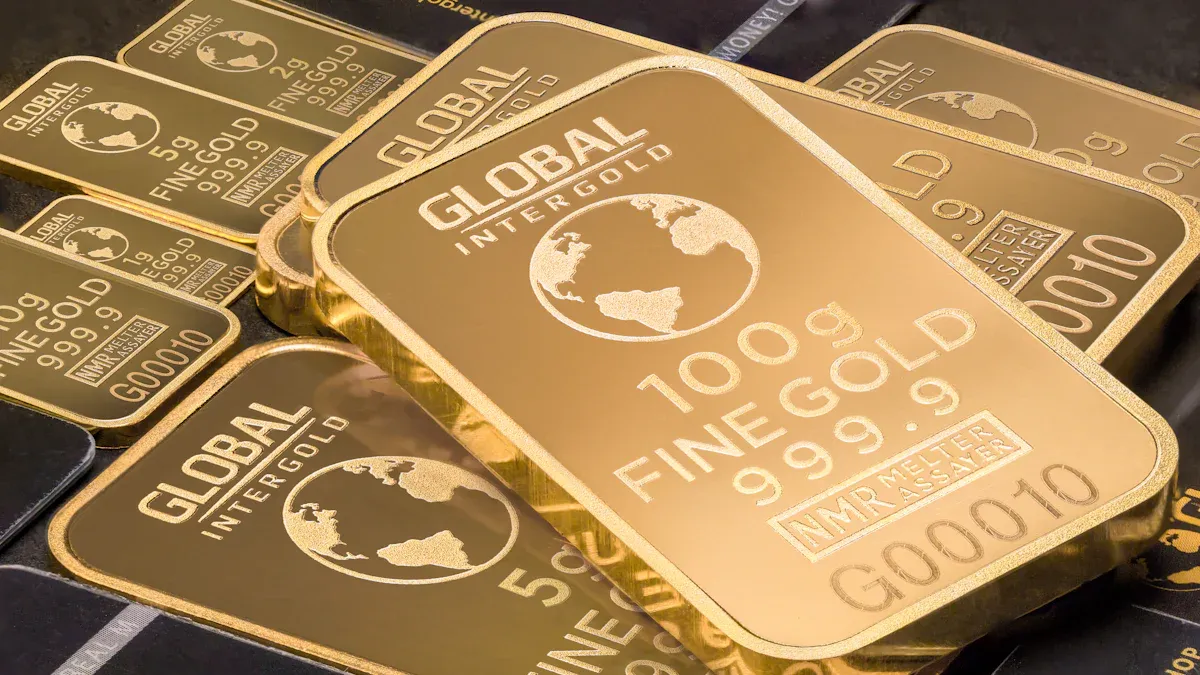
Jewelry
You might have old rings or necklaces at home. These are a big source of recycled gold. If you sell or give away old jewelry, refineries melt it and clean the gold. In 2024, about 30% of all gold used came from recycling. This way uses less energy and water than mining. It also makes much less pollution. Jewelry scrap is the biggest part of recycled gold. When gold prices go up, more people recycle their jewelry. This helps the planet and the economy. The gold recycling market was about $15 billion in 2024. It could reach $25 billion by 2033.
Tip: If you have broken jewelry, think about recycling it. You help cut down waste and keep the Earth cleaner.
Electronics
You use things like phones and computers every day. These have small bits of gold in their parts. As new tech comes out, more old electronics get thrown away. In 2018, people made 50 million tonnes of e-waste. This number goes up by 3–5% each year. Only about 20–30% of this waste gets recycled. E-waste has more gold than natural ore, so it is valuable.
Aspect | Details |
|---|---|
Global e-waste production (2018) | 50 million tonnes, growing 3–5% annually |
Recycling rates | Estimated 20–30% globally |
Gold content comparison | E-waste gold concentration far exceeds natural ore (rich ore ~18 ppm) |
Gold recovery from mobile phones | Per ton: 0.34 kg Au |
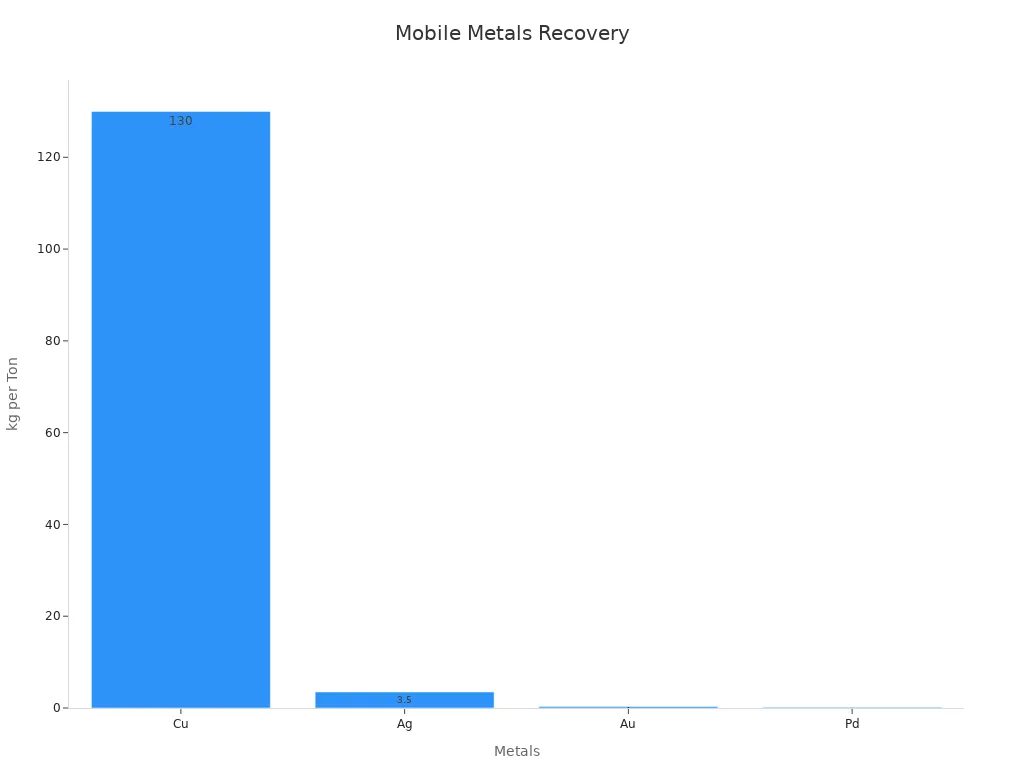
New ways like hydrometallurgy and microbial leaching help get gold from electronics. These methods are safer and better for the environment.
Other Sources
You may not know that dental gold and factory parts are recycled too. Dentists use gold in crowns and fillings. When these are taken out, refineries can recycle the gold. Factories use gold in some parts, like metal masks and plates. These often have gold on them that can be recovered. Studies show that recycling dental alloys keeps them safe to use again.
Gold refineries get scrap from many places. This helps meet the need for recycled gold. In some places, recycled gold is more than what is needed for new jewelry. Gold above ground could supply the world for years. This shows why recycling is so important for the future.
Gold Recycling Process
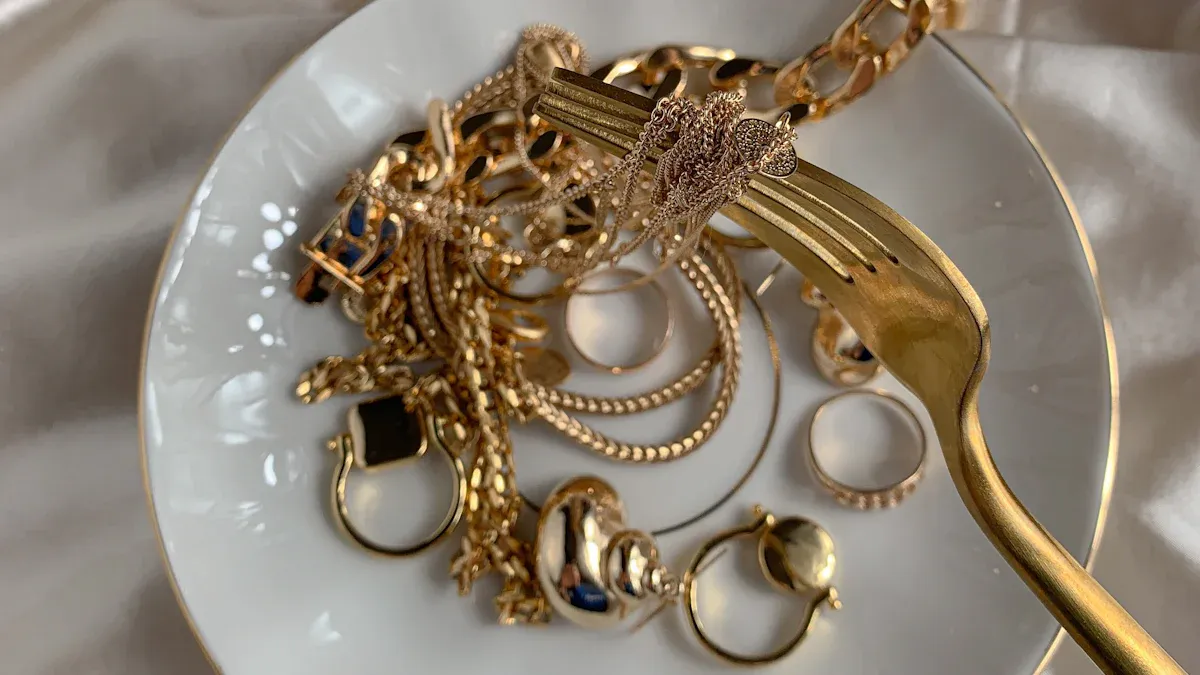
Collection and Sorting
The gold recycling process starts with collecting gold items. These can be old jewelry, broken electronics, dental crowns, or factory parts. You must sort these items with care. Sorting helps separate gold from other materials. Refineries use special tools to check each item. They use X-ray machines or chemical tests to see how much gold is inside. Sorting is important because it makes the next steps faster and cuts down on waste.
Tip: Keep your gold items away from other metals. This makes sorting easier and helps you get more money.
Some recycling centers use advanced analyzers to check gold content right away. These machines can find even tiny bits of gold. This helps stop losses and improves how much gold is recovered. One gold mine used a special analyzer to check gold in ore and waste. This helped them get more gold and make less waste.
Melting and Refining
After sorting, the next step is melting and refining. Refineries melt gold at very high heat, over 1200°C. This step separates gold from other metals and dirt. Workers use barcodes to track each batch so nothing is lost. After melting, the gold goes through chemical cleaning. These steps remove any leftover dirt and help reach up to 99.99% pureza.
Here are the main steps for melting and refining:
Experts test the material to see how much gold it has.
The gold is melted to separate it from non-metal parts.
Workers use acids to gather the gold and remove other metals.
Special methods pull out pure gold from the mix.
Recycling centers follow strict rules for quality. They use tests like XRF and Fire Assay to check gold purity. Many companies also follow global certifications, like the Responsible Jewellery Council or Fairmined. These rules make sure the gold is pure, fairly sourced, and safe for nature.
A study showed that how you wash and use water during recycling can change how much gold you get back. The best way uses evaporation to recycle water and save gold. This careful process helps nature and keeps gold recovery high.
Creating New Products
Once the gold is pure, it can be made into new things. Refineries shape gold into bars, coins, or new jewelry. You can find recycled gold in rings, watches, and electronics. Companies like TANAKA Precious Metals show that recycled gold is as good as new gold. Their process keeps the gold strong, so products last a long time.
Note: Gold can be recycled again and again without losing quality. Experts say recycled gold is just as pure and strong as new gold. This means you help the Earth and still get great products.
Recycled gold helps create a circular economy. You help cut down on new mining, save energy, and lower pollution. When you buy recycled gold, you support a cleaner and better future.
How to Recycle Your Gold
Preparing Items
You can start recycling by preparing your items at home. First, gather all the things you want to recycle. This can include broken jewelry, old coins, or electronics with gold parts. Clean each item to remove dirt or dust. Sorting your items by type and karat helps you get a better price.
Follow these steps to prepare your gold for recycling:
Choose items that contain gold, such as jewelry or electronic parts.
Wear gloves and goggles if you handle sharp or dirty objects.
Place your sorted items in separate bags or boxes.
Tip: Clean and sort your items before taking them to a recycler. This makes the process faster and safer.
Where to Recycle
You have several options for recycling. Many local jewelry stores accept old gold items. Some electronics stores offer e-waste recycling programs. You can also find certified recycling centers in your area. These centers use safe methods to recover metals and protect the environment.
Local jewelry shops often buy gold directly from you.
Electronics recycling centers accept devices with gold parts.
Some cities have special collection events for metal recycling.
Community programs and private companies work together to make recycling easy. In some places, recycling centers also help treat waste water from gold recovery, which keeps rivers clean.
Getting Fair Value
You want to get the best value for your gold. Always check the current market price before selling. Ask the recycler how they test purity. Common methods include XRF testing, which does not damage your items, and acid testing, which is more hands-on.
Step | What to Do |
|---|---|
1 | Clean and sort your gold by karat |
2 | Weigh your items at home |
3 | Visit several buyers and compare offers |
4 | Ask for proof of purity testing |
5 | Check reviews to avoid scams |
Remember, detailed designs or rare pieces may be worth more than just their metal content. Always research and ask questions to make sure you get a fair deal.
When you recycle gold, you help protect the Earth. Research shows recycling makes air cleaner and saves energy. It also helps the economy grow. The table below shows how studies prove these good effects:
Evidence Type | Description |
|---|---|
Show strong links between recycling and better environmental and economic outcomes. | |
Case Studies | Reveal local success stories where recycling gold improved both nature and jobs. |
Meta-analyses | Prove positive impacts on soil and climate compared to mining. |
If you recycle old jewelry or electronics, you help the planet. You also support new ideas that make the world better for everyone.
FAQ
How pure is recycled gold?
Recycled gold can reach up to 99.99% pureza. Refineries use advanced tests to check quality. You get gold that is just as pure as newly mined gold.
Can you recycle gold at home?
You should not try to recycle gold at home. The process uses high heat and strong chemicals. Always take your gold to a certified recycler for safety.
What items in your home contain gold?
You can find gold in:
Old jewelry
Broken watches
Cell phones
Computers
Dental crowns
Does recycled gold lose value?
Recycled gold keeps its value. Gold does not wear out or lose quality when recycled. You can use recycled gold in new jewelry or electronics without any loss.
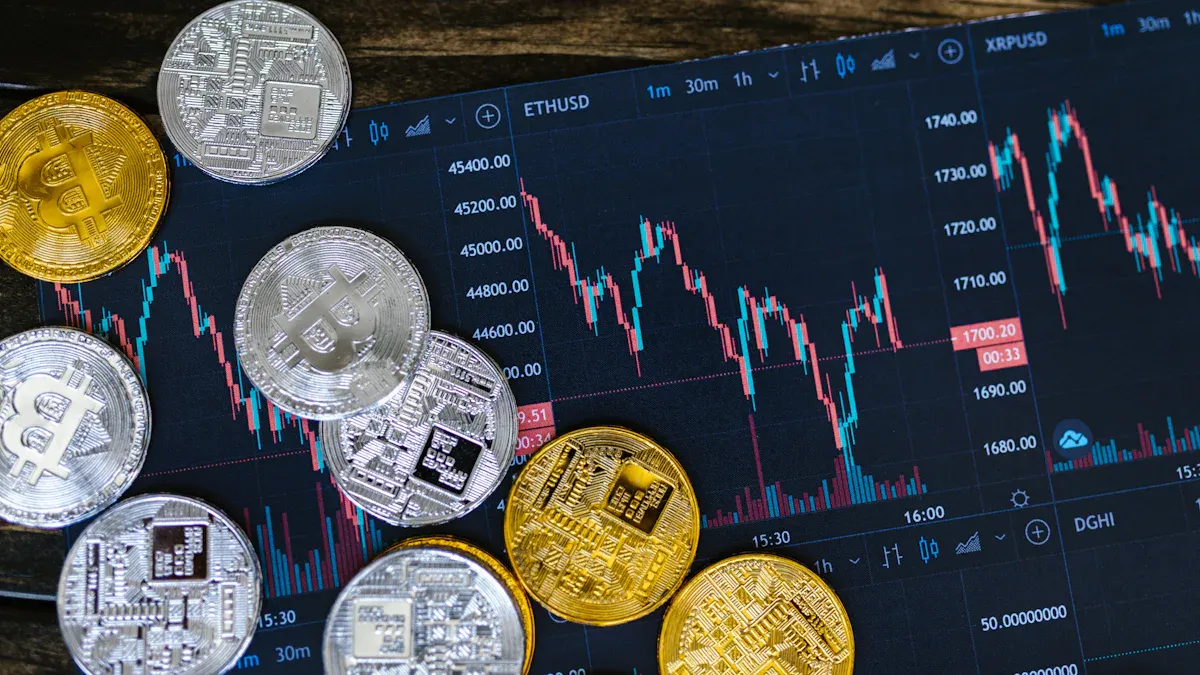
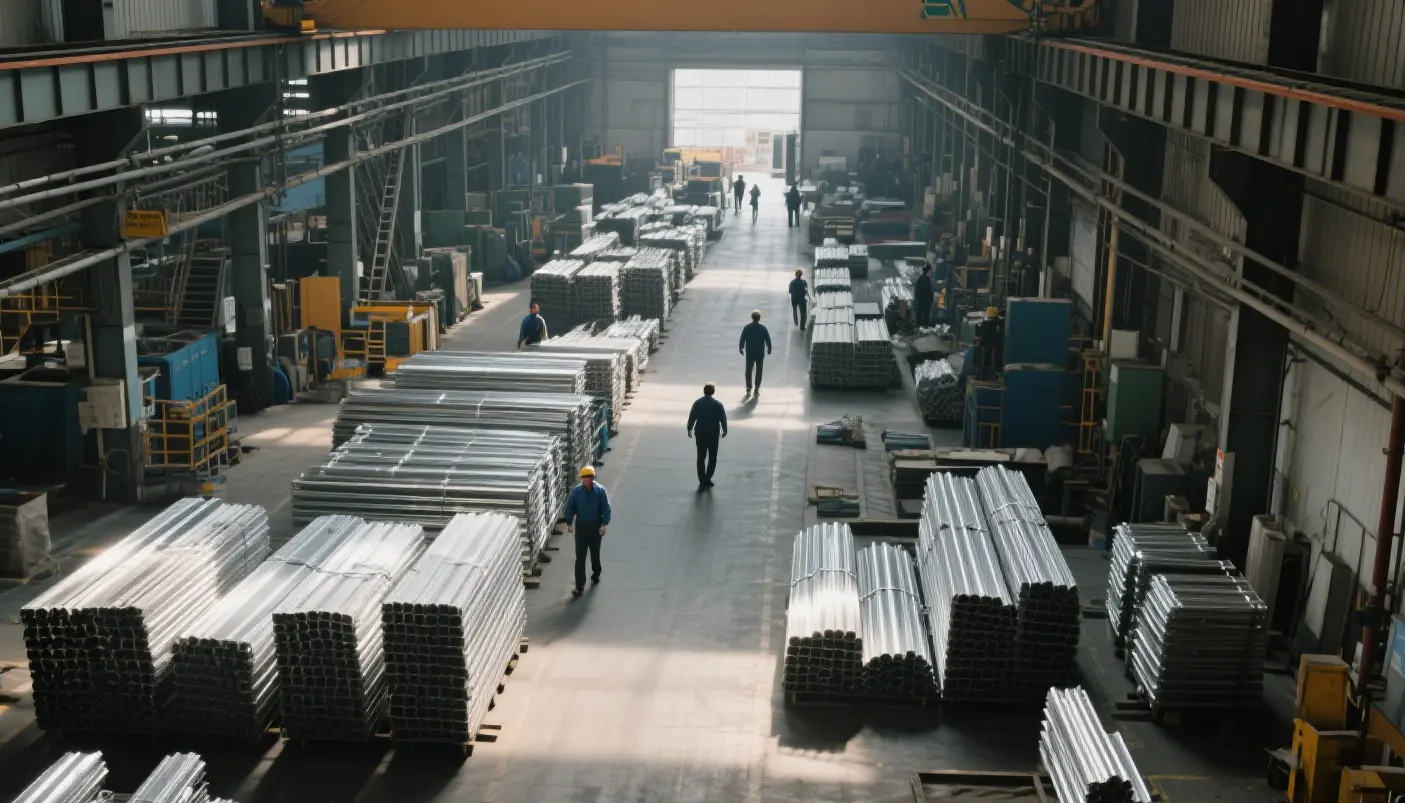
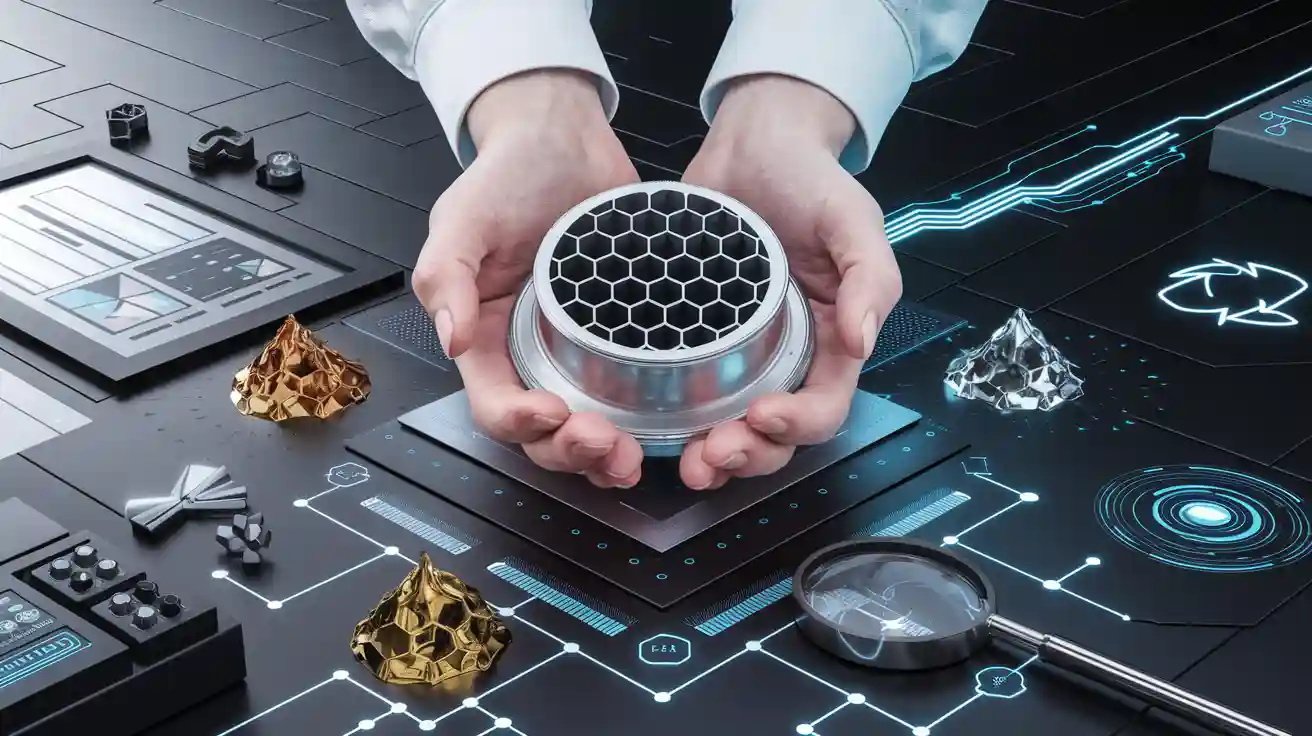
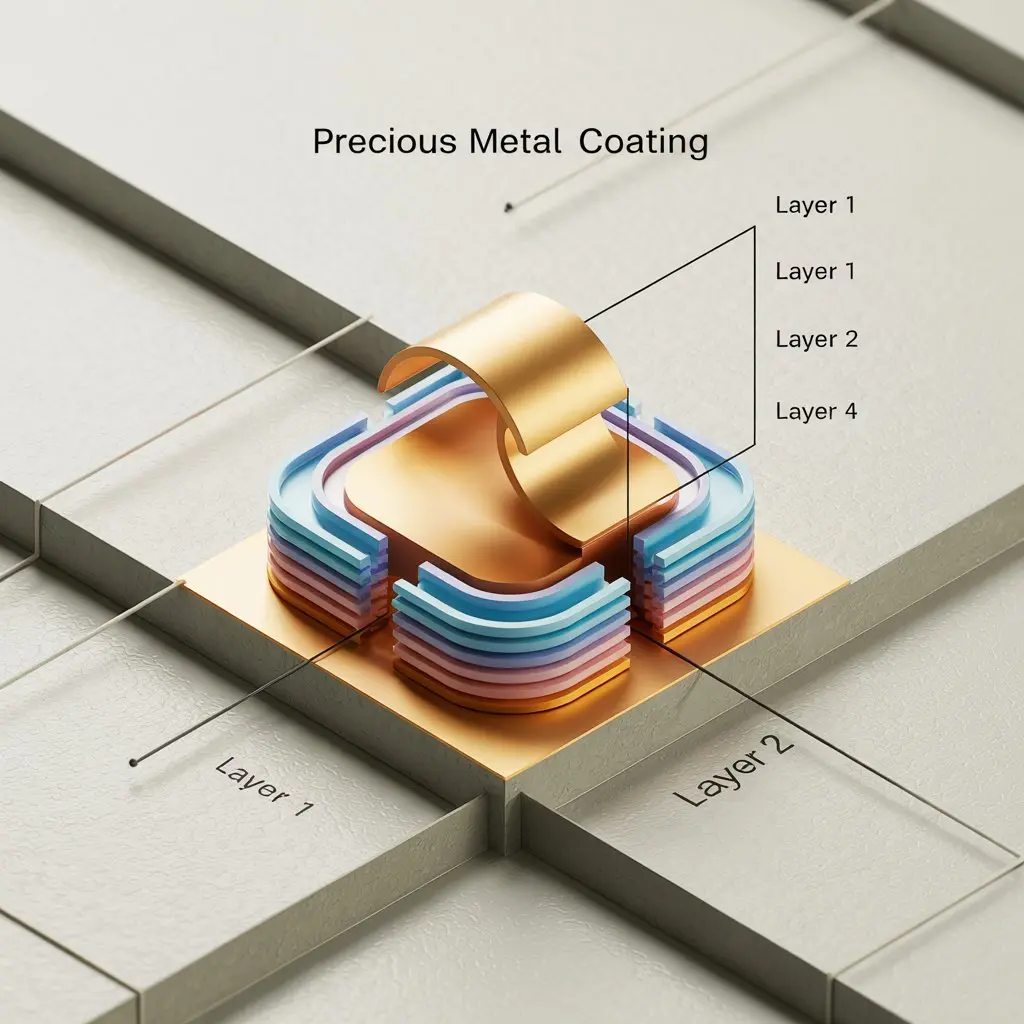
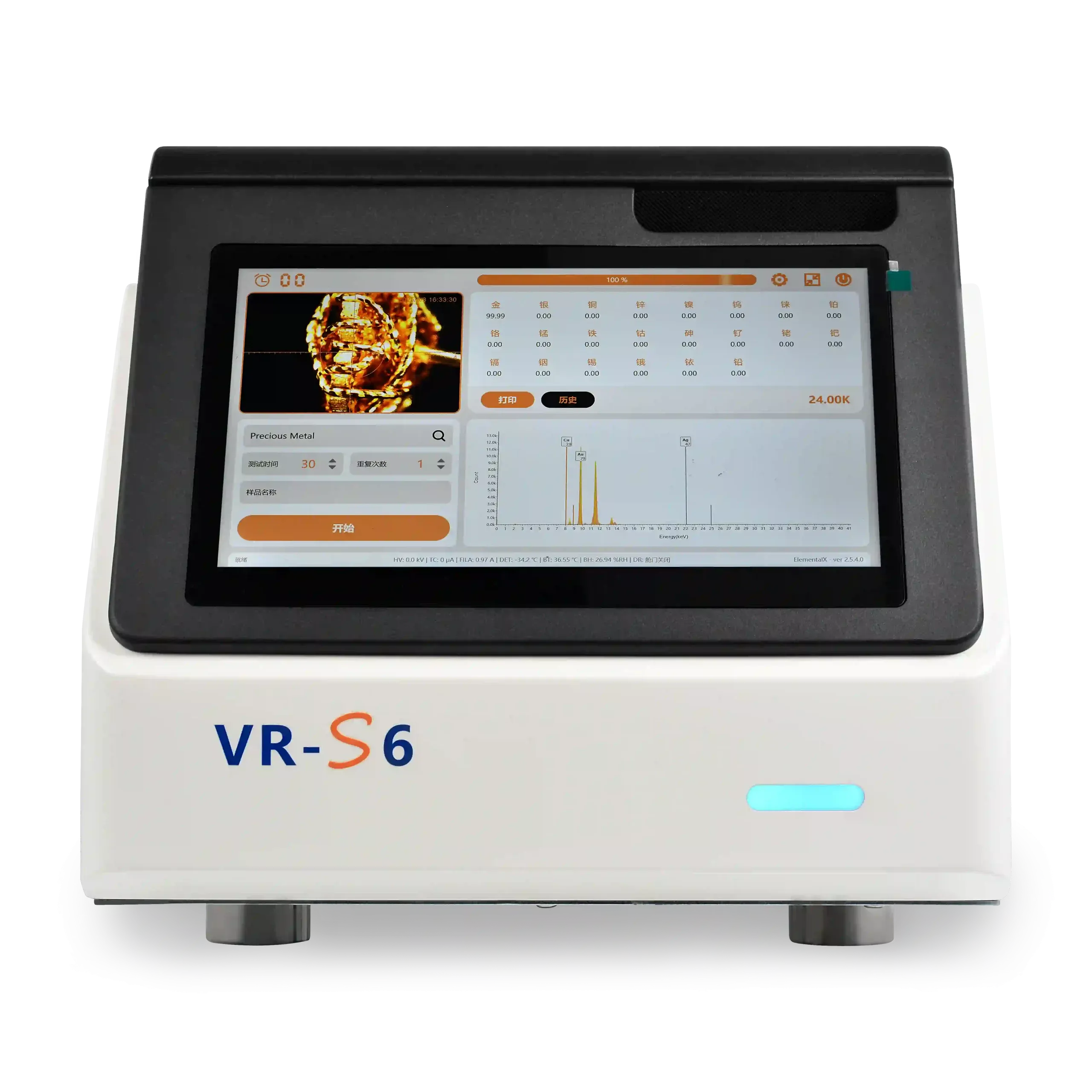

WhatsApp
Escaneie o QR Code para iniciar uma conversa no WhatsApp conosco.